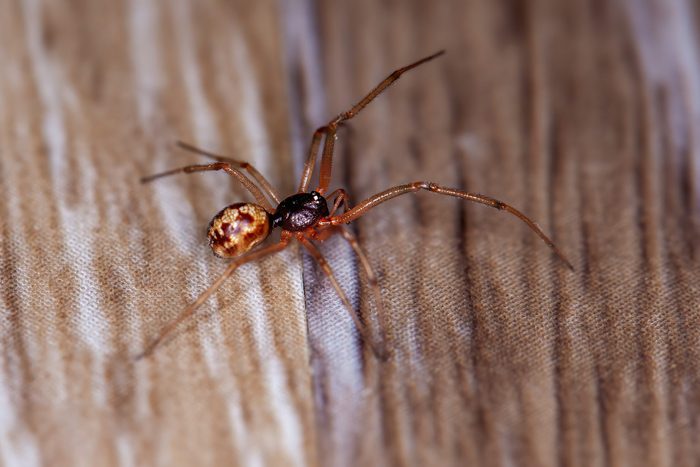
Spiders
Spiders belong to a subgroup of terrestrial arthropods (aka arachnids) whose main prey are mites, ticks and scorpions. A spider has four pairs of legs, eight eyes and unsegmented abdomens. If you find wings or antennae on a crawler, what you have instead is an insect. Outside of Antarctica and in the oceans, spider habitats are found everywhere in the world.
Why you shouldn’t kill spiders
Putting arachnophobia aside, allowing spiders to coexist with you indoors can be a big plus. According to Katelyn A. Kesheimer, Ph.D., assistant professor and extension specialist at the Alabama Cooperative Extension System, Auburn University, “Spiders are harmless and provide free and excellent biological [pest] control.”
Wolf spiders are commonly found crawling along the ground in leaf litter or may even make it into the house. You shouldn’t kill them because, Kesheimer says, they’re harmless and feed on small insects inside and outside your home. Here are different types of house spiders.
“I don’t know that most people would want spiders around,” she says. “But at the very least, if we can learn to live with them, we may fear insects less and appreciate the critters around us.”
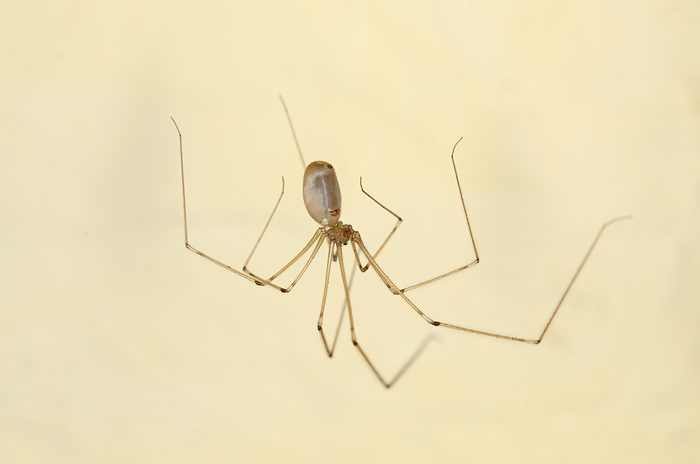
Daddy Long-legs
Commonly called daddy long-legs or harvestmen, the real name for this spindly bug is the cranefly. It’s often confused with a spider, which it’s not. Other popular nicknames include skeeter-eater and mosquito hawk.
A member of the Tipulidae (order Diptera) family, daddy long-legs is grayish-brown with darker brown edges on its wings. Although some say it resembles a giant mosquito, you’ll be happy to know daddy long-legs do not bite or sting.
They live all over the world except in frigid Arctic regions, preferring areas near ponds and wetlands with abundant water and vegetation. They can come inside your home at any hour, but because they’re drawn to light they’re likely to do it in the evening.
Why you shouldn’t kill daddy long-legs
Kesheimer makes a good case, pointing out they eat small insects and plant pests like aphids. “They will also feed on dead insects and bird poop,” she says, “so I guess they can help clean up your patio.”
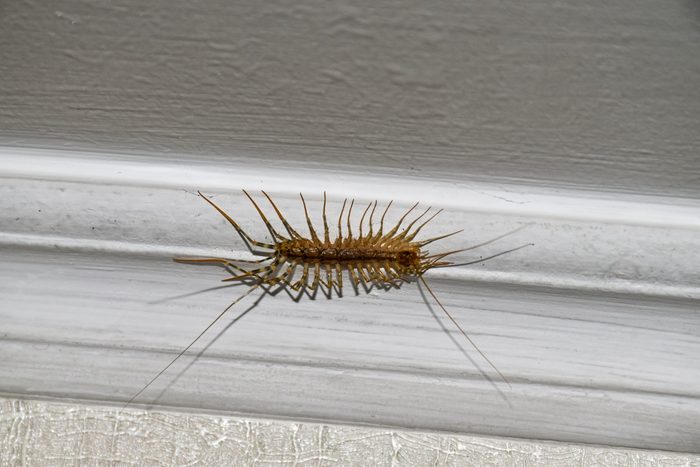
Centipedes
Centipedes (the name means 100 legs) are primitive arthropods that slink along like a worm. They’re characterized by long segmented bodies, each sprouting a pair of legs. Centipedes are found throughout the world, particularly where moisture is high. That’s why you’ll find them in damp basements, bathrooms and potted plant soil.
Why you shouldn’t kill centipedes
Kesheimer admits house centipedes are one of the weirdest looking critters you’ll come across. “But they are as beneficial as they are bizarre-looking,” she says.
You want them hunting small insects and other arthropods that hide in your home, including carpet beetles, cockroaches, silverfish and spiders.
“In addition to the free pest control, house centipedes can serve as a gauge of pest pressure in your home,” Kesheimer says. “If you start to see an increase in house centipedes, it means there is something they want in your home, which may mean a pest problem.”
Although slinky and frightening at first, there’s really no reason to kill them. Apart from the above benefits, you needn’t worry about them carrying diseases or building nests or webs. Plus, they rarely cause infestations in homes. Check out the best centipede traps to snare them without much fuss.
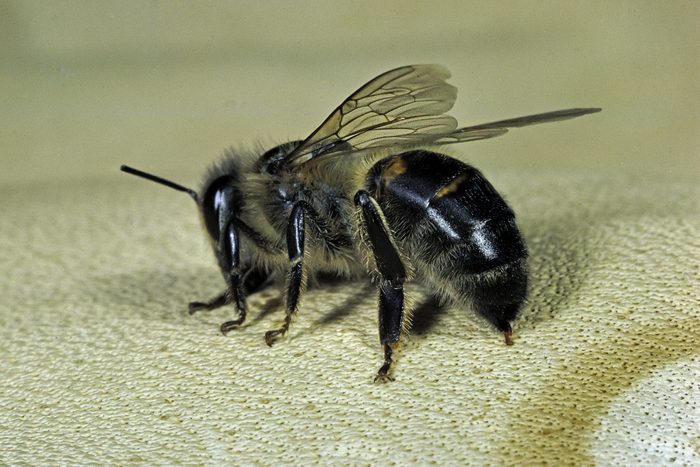
Bees
The most common types of bees found in the U.S. are Western honeybees (genus Apis) and bumblebees (genus Bombus). Both are pollinators native to North America. The former has a small, slim segmented body, while the latter looks like one big, plumb, fuzzy mound.
Why you shouldn’t kill bees
Bees are the most beneficial and endangered species of insects on the planet and should be protected at all costs.
Obviously, honeybees make honey. But beyond that, MedicalNewsToday reports bee and bee-related products contain many medicinal properties to treat everything from inflammation, asthma and wounds to hiccups. Above all, as pollinators, bees play a major role in the biodiversity of the planet, contributing greatly to world food security.
If you find a honeybee hive or bumblebee nest in or around your house, contact a local beekeeper. They’re equipped to help you remove and relocate the colony.
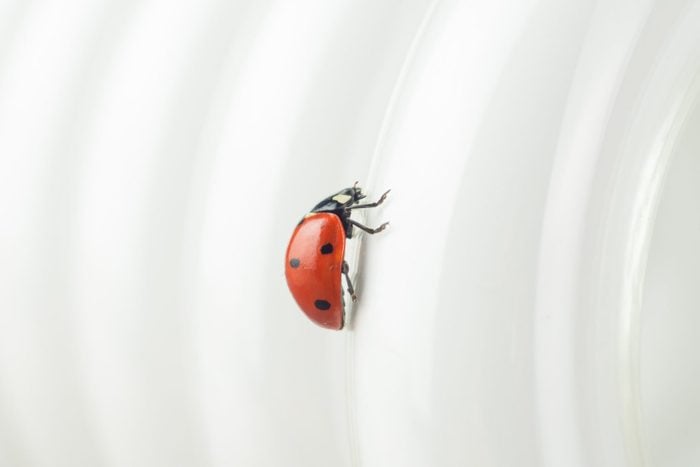
Ladybugs
The ladybug (aka lady beetle and ladybird beetle) is a sign of good luck in many cultures.
Ladybugs have hard-shelled bodies shaped like a half dome with tiny black spots. They also have short legs, wings and antennae. Though most commonly colored red, they can also be orange and yellow. More than 5,000 species live all over the world, with about 450 native to North America.
Why you shouldn’t kill ladybugs
It’s common to find a ladybug inside your home, especially in winter. Warriors in the fight against aphids in the garden, the adult ladybug is also great at combating mealybugs on houseplants and microscopic mites that inhabit carpets, rugs and upholstery.
However, Kesheimer says ladybugs in large numbers can become a nuisance and emit a foul odor when disturbed.
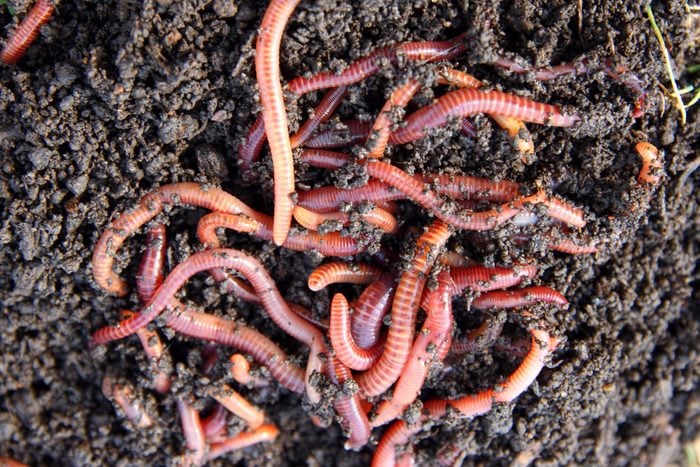
Red Wiggler Worms
Red wiggler worms (Eisenia fetida). aka manure worms or redworms, are a type of earthworm. They’re reddish-brown with small rings around their torsos that “ombre” gradually down to a yellowish tail. Each body segment has “bristles” that help them push themselves forward or backward.
Why you shouldn’t kill red wiggler worms
You might want to go out of your way to cultivate or purchase red wiggler worms. That’s because they’re ideal for indoor vermicomposting. This eco-friendly, sustainable composting process uses these worms to convert organic waste into fertilizer.
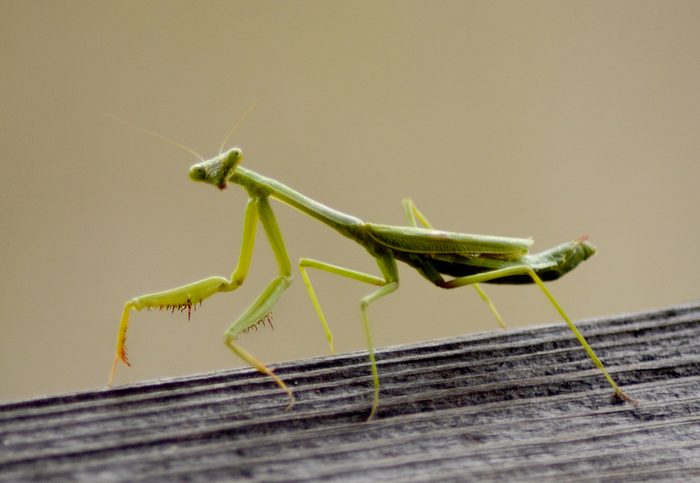
Praying Mantis
Easy to identify, a praying mantis has a narrow, green body three to four inches long and a small triangular head with two large compound eyes. Their oversized front legs reach up to their face, creating the appearance of someone praying, hence the name. Of the more than 1,500 types of mantises in the world, only five species are common in the U.S.
Why you shouldn’t kill a praying mantis
Keeping a praying mantis as a house pet is not the worst idea ever. They hunt, trap and feed on pests like moths, mosquitoes, flies and even roaches.
They can, however, lay eggs indoors which may produce a brood of little mantises. If that’s a worry, gently catch a praying mantis with your hands (ideally from behind) and place it outdoors where it will help control mosquitoes and other pests.
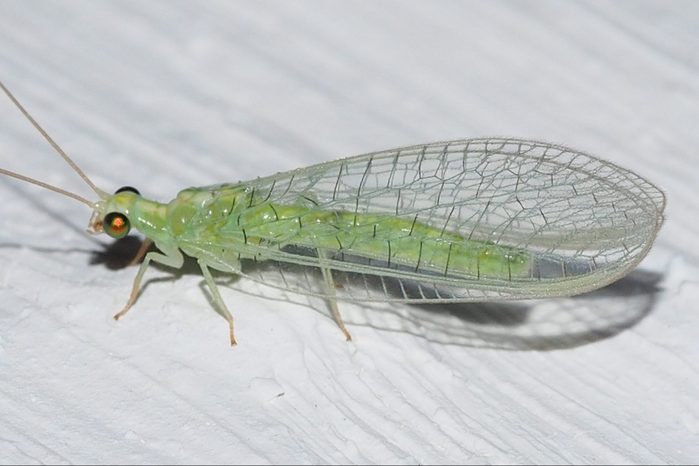
Green Lacewings
Native to North America, the mature green lacewing (aka “aphid lion”) gets its name from its minty-green color and dainty gossamer-like wings. In the larval stage these insects have bodies with brown and red stripes and spots in a hump-backed shape with long hairs growing out of the sides. Some say they look like miniature alligators with front pinchers.
“The larvae have big jaws they use to feed on small insects and can help clean up pests,” says Kesheimer.
Why you shouldn’t kill green lacewings
Introducing green lacewing into your home to hunt down houseplant destroyers like mealy bugs and spider mites is called integrated pest management (indoors). If you’re not too squeamish about cohabitating with insects, green lacewings will become your ally to protect your favorite houseplants.
You can purchase green lacewing eggs or larvae from a local garden center. Release them into your home — they’re a non-toxic and effective way to keep pesky, non-beneficial pests out of the house.
